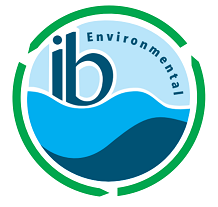Energy Burden and its Drivers
By Amir Abdelnaby
The energy burden in the Southeastern US is higher than in most other parts of the country. There are several reasons for this, including the hot climate, and less investment in energy efficiency compared to the rest of the country.
Energy burden is defined by the U.S. Department of Energy as “the percentage of gross household income spent on energy costs”. Everyone has an energy burden, but the percentage of that burden indicates whether it is low, high, or severe. While there is no universally accepted value or threshold that establishes whether a household faces a high or unaffordable energy burden, the American Council for an Energy-Efficient Economy (ACEEE) indicates that energy burdens below 6% are low, above 6% are high, and above 10% are severe. If you’re curious where you may fall, calculating your energy burden is easy .
To calculate your energy burden, simply divide your annual energy costs by your annual gross income. Despite the calculation being simple, the reality behind your energy costs is much more nuanced. Numerous driving factors, both internal and external, contribute to a household’s burden. Internal drivers stem from an individual’s life or home, like coming from a low-income background, living in a home that is poorly insulated, or having appliances that are not energy efficient. Click here to learn more about energy efficiency. External drivers stem from the world you live in, like economic crisis or company layoffs. These drivers can be separated into four categories, as shown in Table 1:
All these drivers can influence your energy costs, and thus your energy burden. This reality has always existed, but factors such as the Covid-19 crisis, the invasion of Ukraine and the war in Gaza have made energy burden much more problematic. Those already experiencing a high or severe burden only had it worsened, and many who were near the 6% mark were pushed into the high energy burden category.
There are more consequences of high energy burdens than can be discussed here, but we point out a few important ones. When considering the physical drivers in Table 1, it has been found that many households with high burdens live in old homes. These outdated residences can have severe health impacts, such as lead vulnerability, respiratory issues, hypothermia, and heat exhaustion. While the physical consequences are alarming, the stress and anxiety caused by high energy costs can lead to both mental and physical health deterioration. Looking at the issue in totality, it appears that those already struggling are doomed to continue their struggle.
In a 2019 study on energy burdens and economic poverty, McCreery and Bohr found that “energy-burdened households were at about 150%–200% greater risk of transitioning into or extending the duration of economic poverty over a two-year timeframe relative to non-burdened households”. So, if McCreery and Bohr are correct, how can these disadvantaged communities be helped?
Below is a list of options and a graphic presented by Bohr and McCreery, that could assist communities in lowering their energy burdens:
1. Bill payment assistance programs
2. Energy-saving education programs
3. Weatherization programs
4. Energy efficiency programs
One great example from the list is Georgia’s Weatherization Assistance Program “WAP”. The weatherization program helps in insulating your home, making energy-efficient improvements, and performing system improvements. All these actions can drastically help many households, but like many programs, public awareness can be an issue. With more assistance programs and funds, as well as more awareness, countless households that are classified as having a high energy burden can be helped. The Low Income Energy Assistance Programs in Georgia blog post provides more information on these existing programs. Going forward, IB Environmental is working with a team, led by Southface, that is doing an energy transition plan for DeKalb County. As part of the Clean Energy Dekalb project we are mapping energy burdens for subpopulations within the county, to identify areas that are experiencing high burdens. This work is meant to help target assistance in the process of creating a more sustainable county.
This blog post is part of the community engagement associated with the County’s “Clean Energy Transition” project.
This is part of a series on energy actions. Read the other blog posts here:
Low Energy Assistance Programs in Georgia
Local Committies/Cohorts: Amplifying Voices for Climate Action
Subscribe Here
Sign up with your email address to receive notices of new blog updates. We post about once per month.



